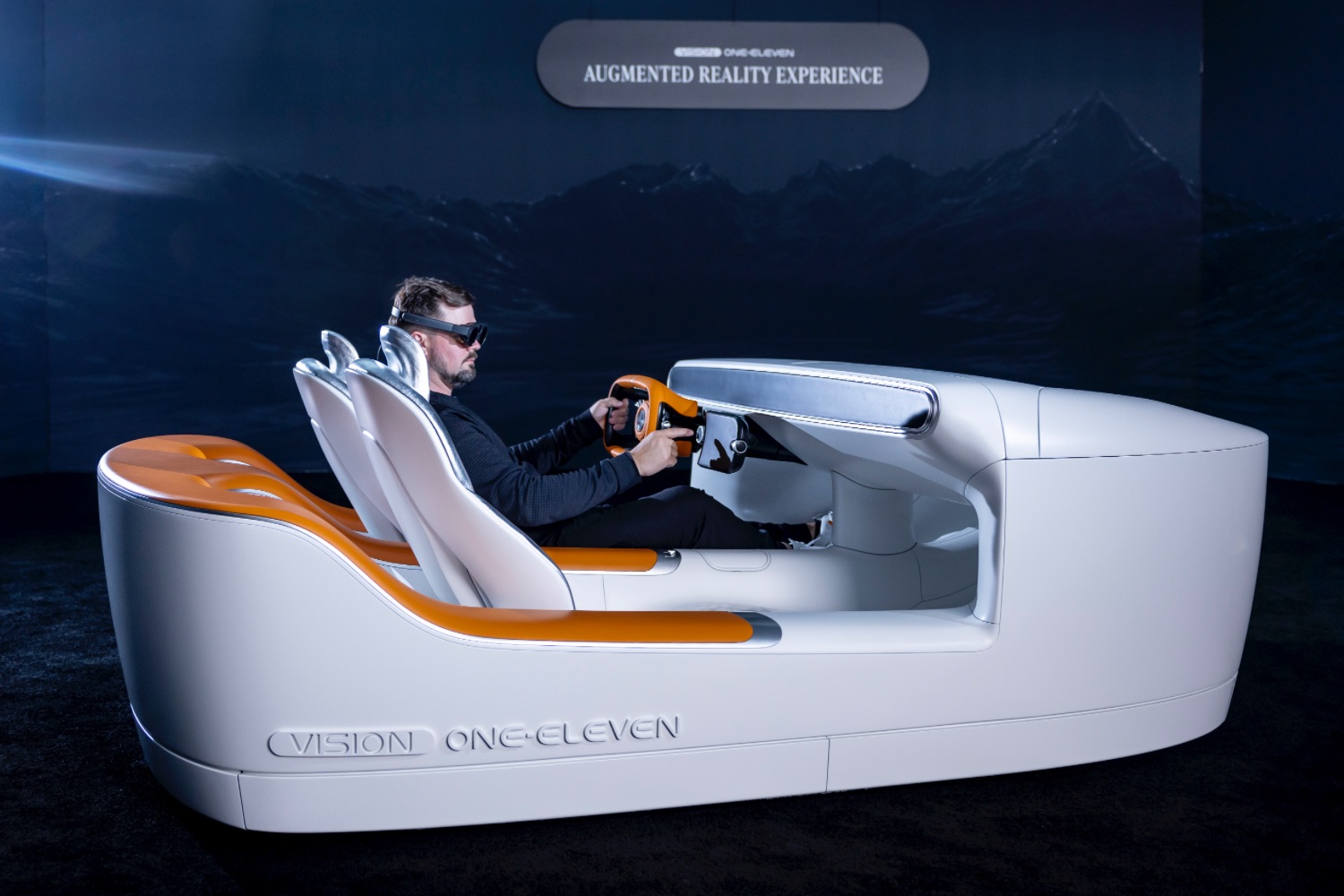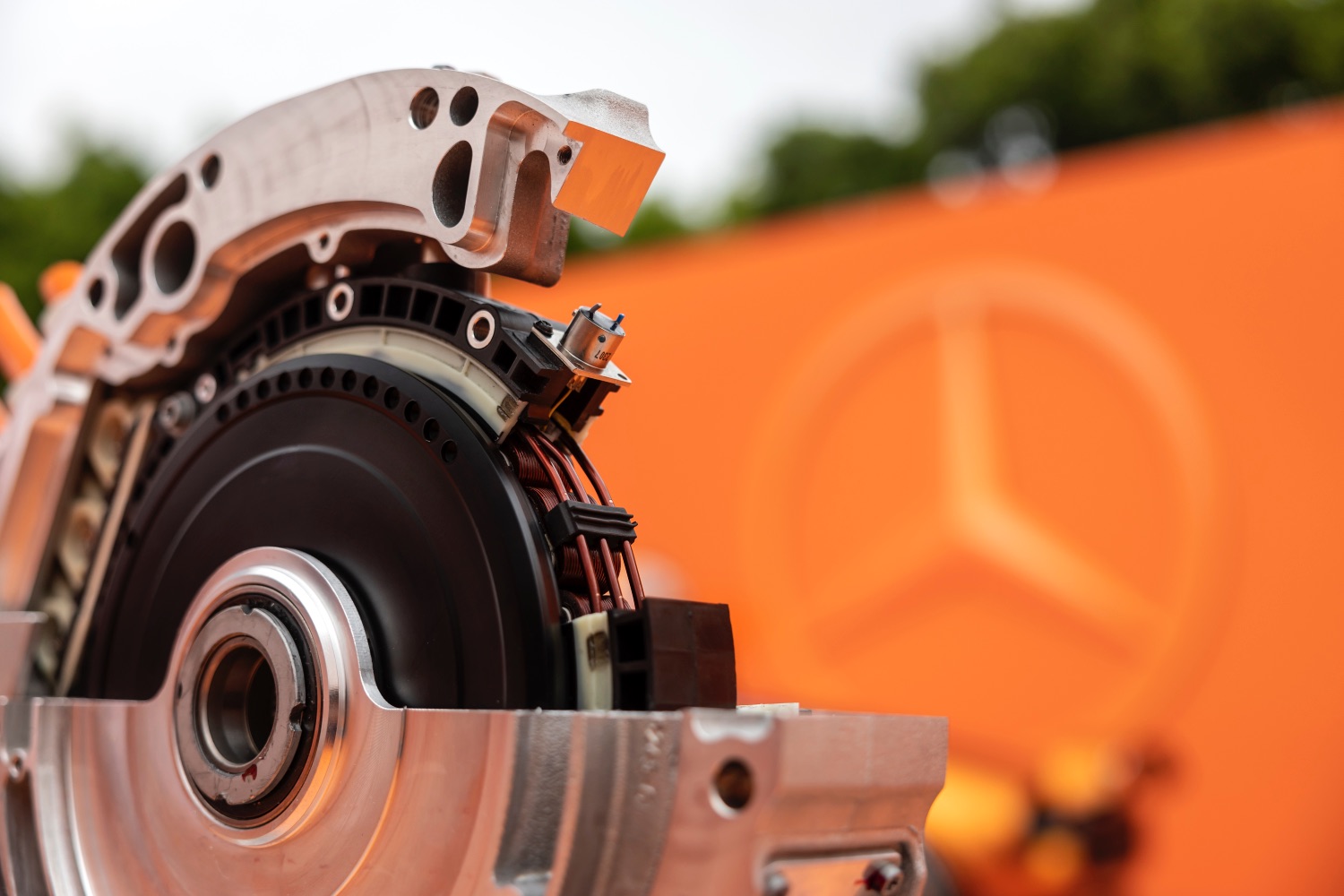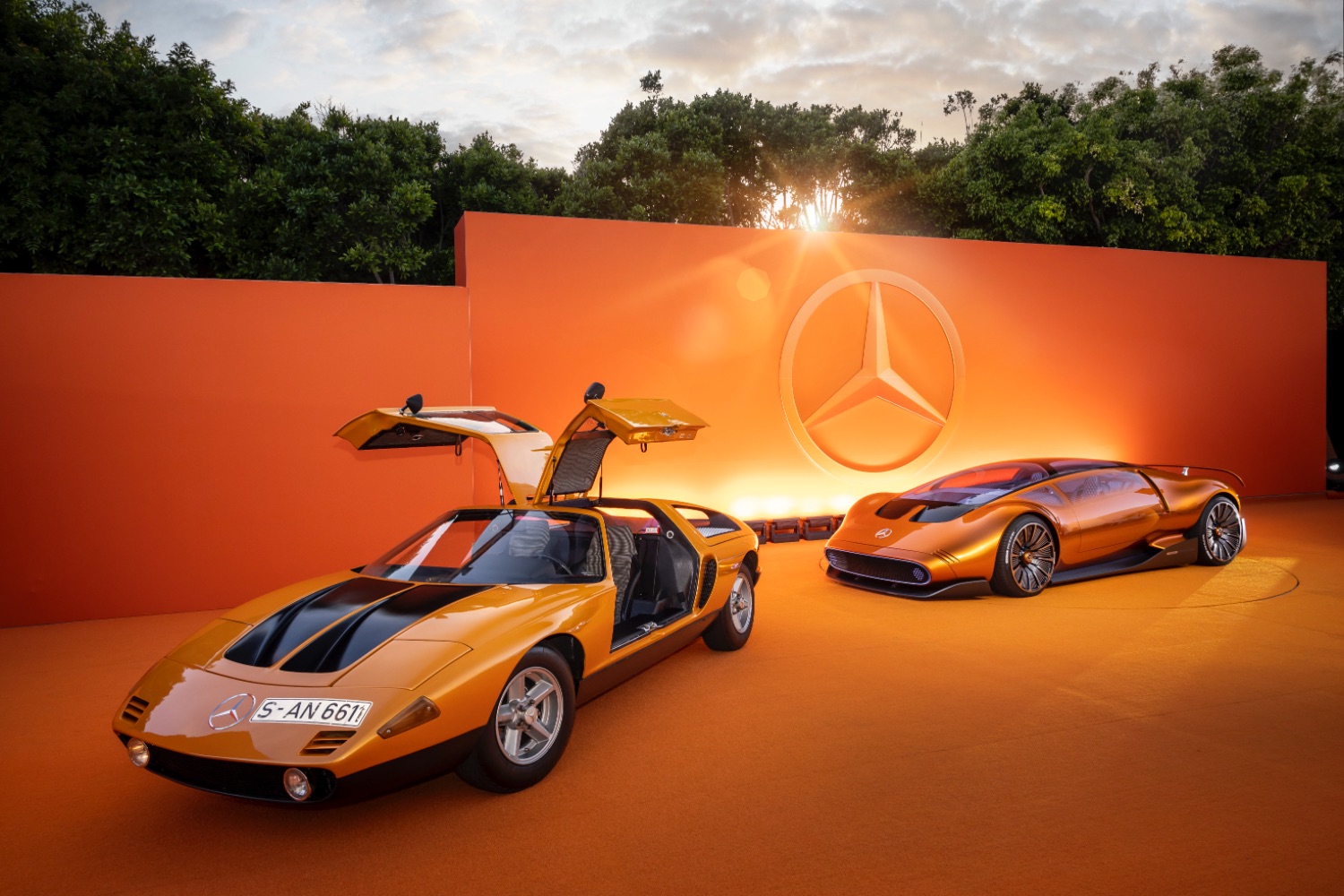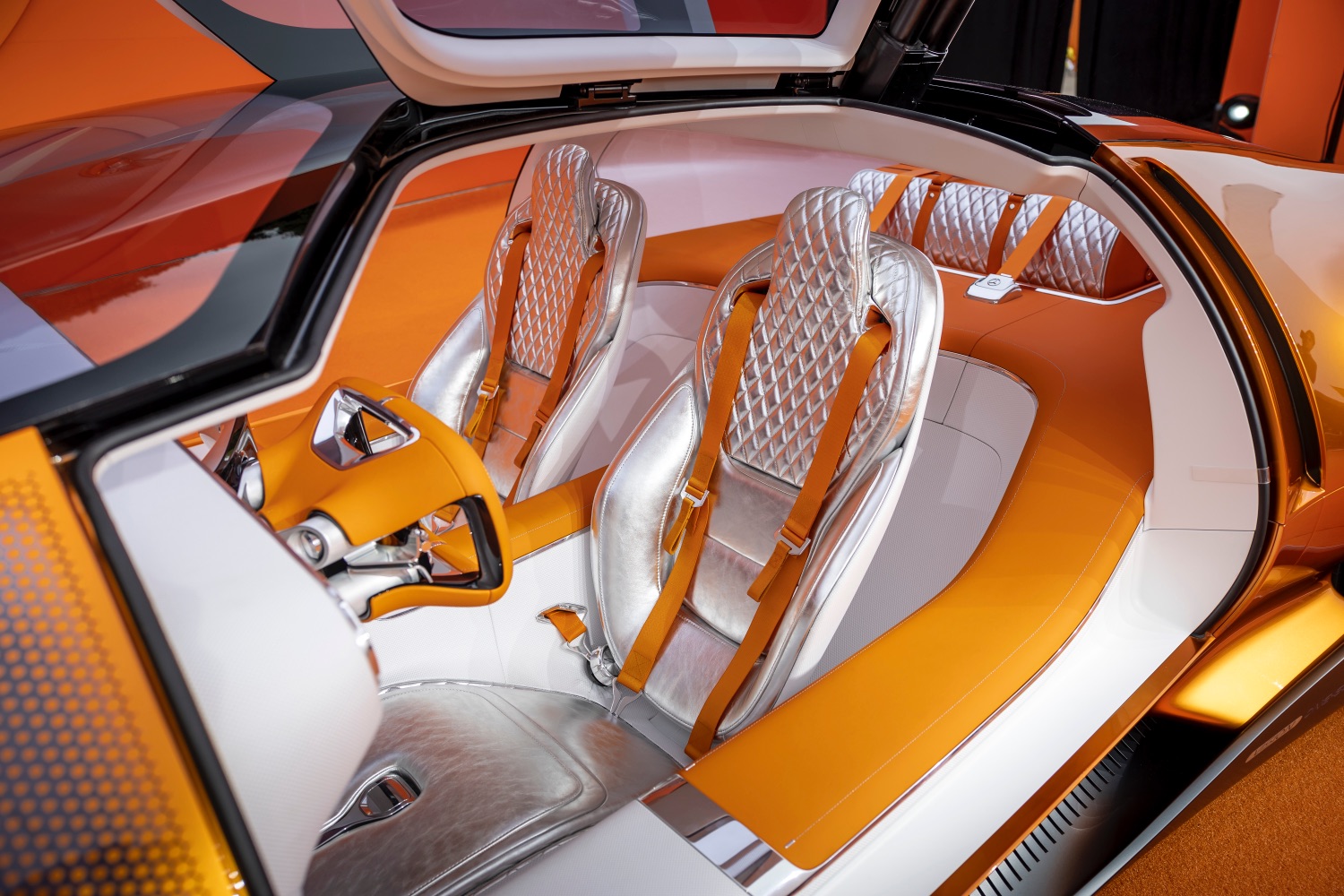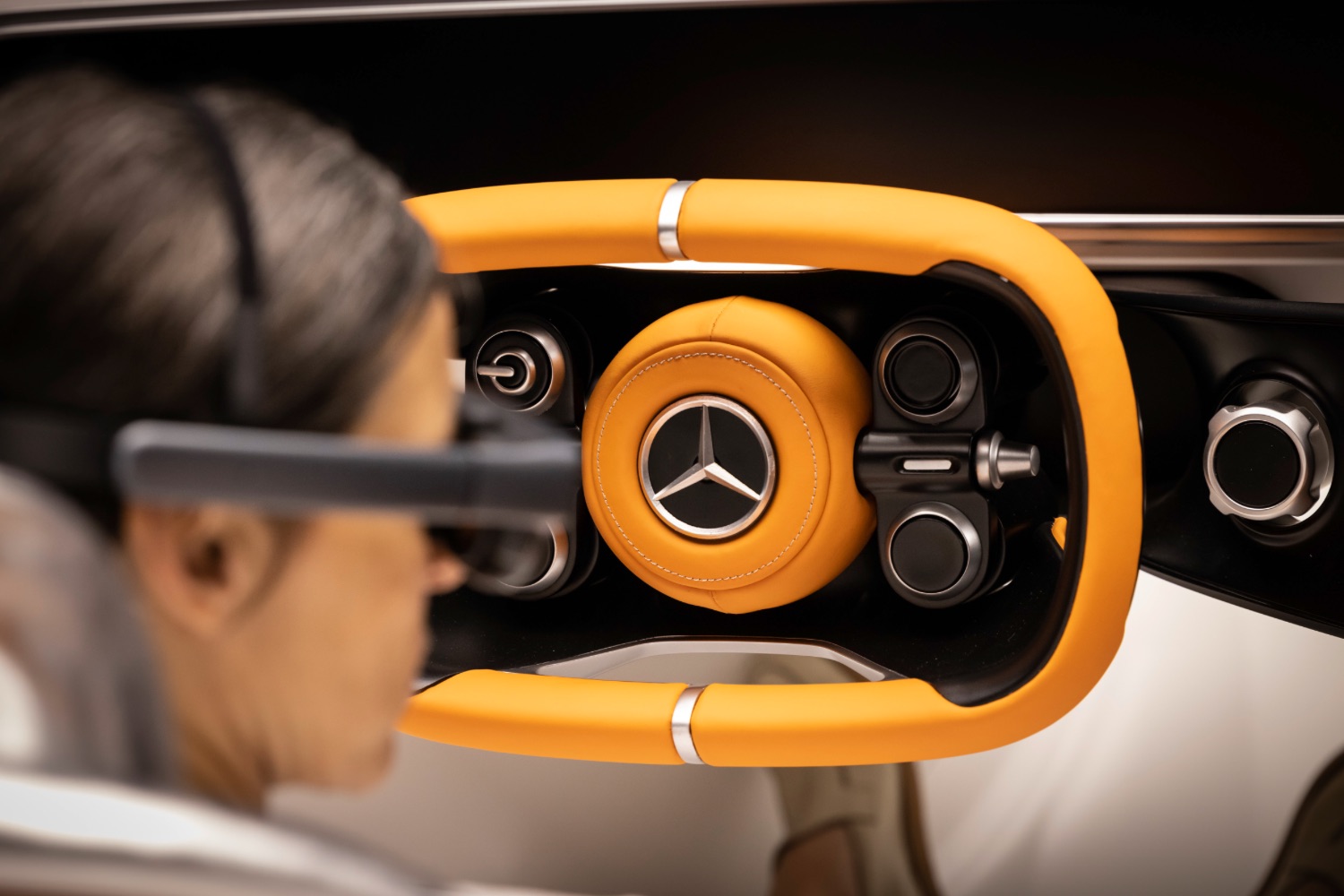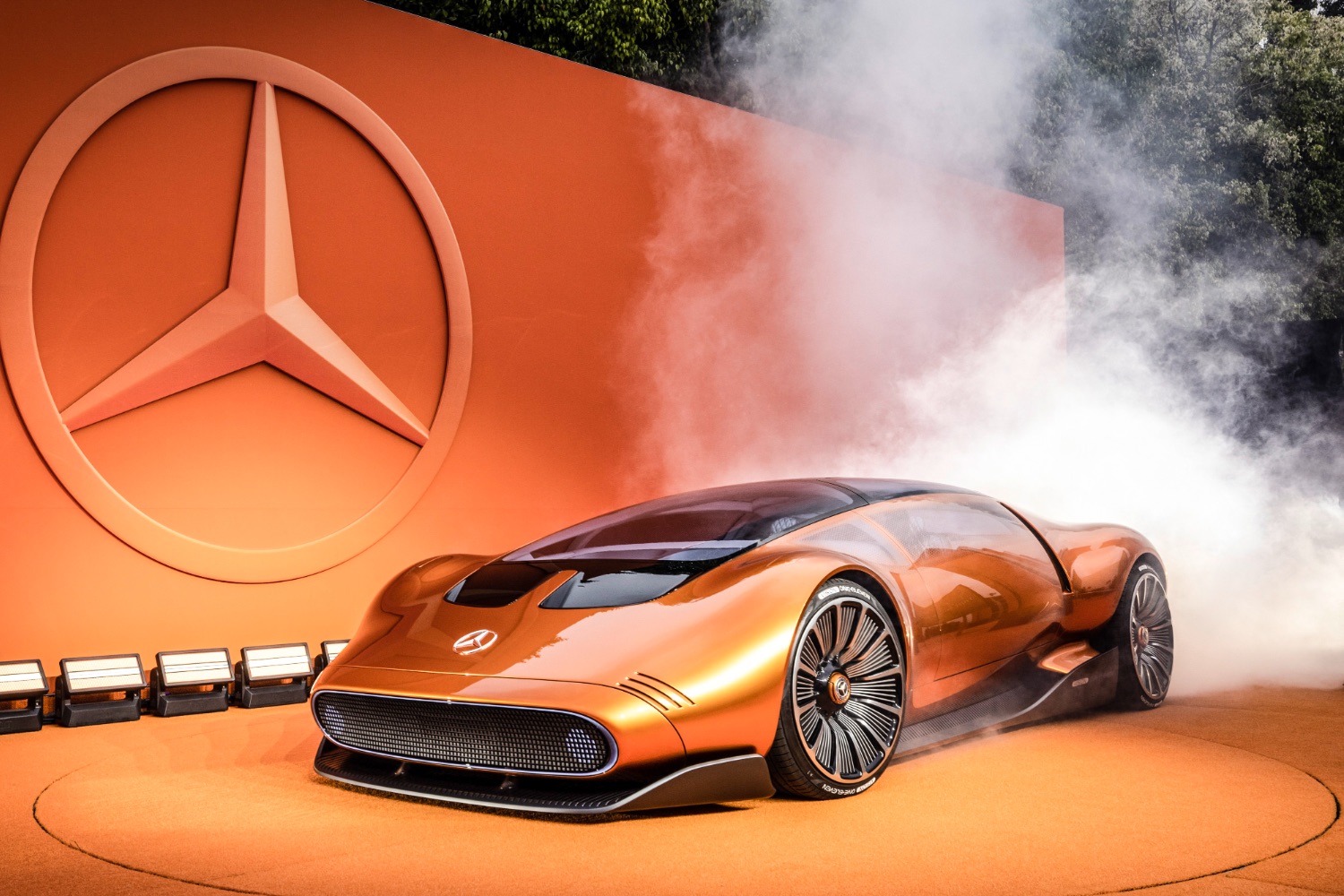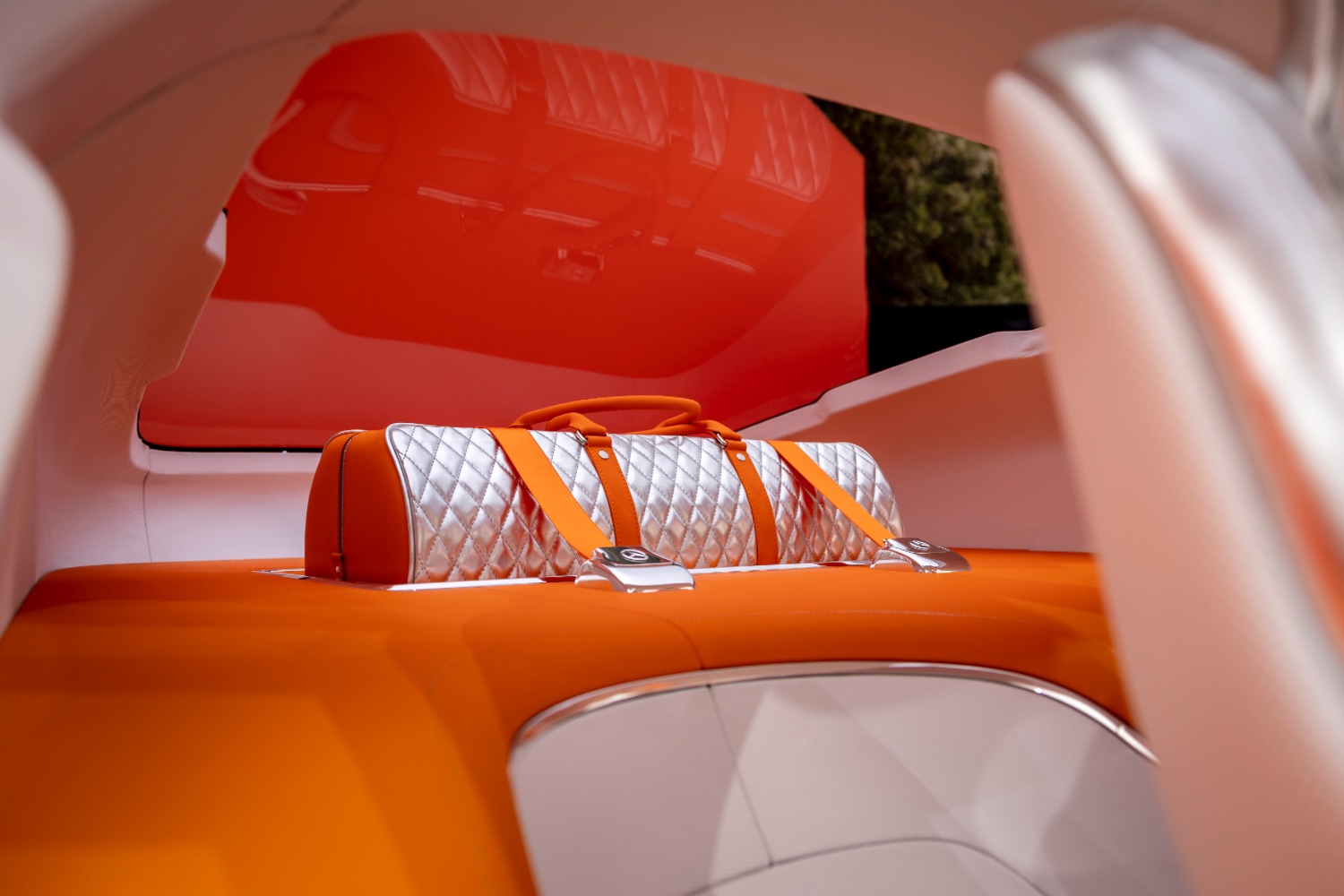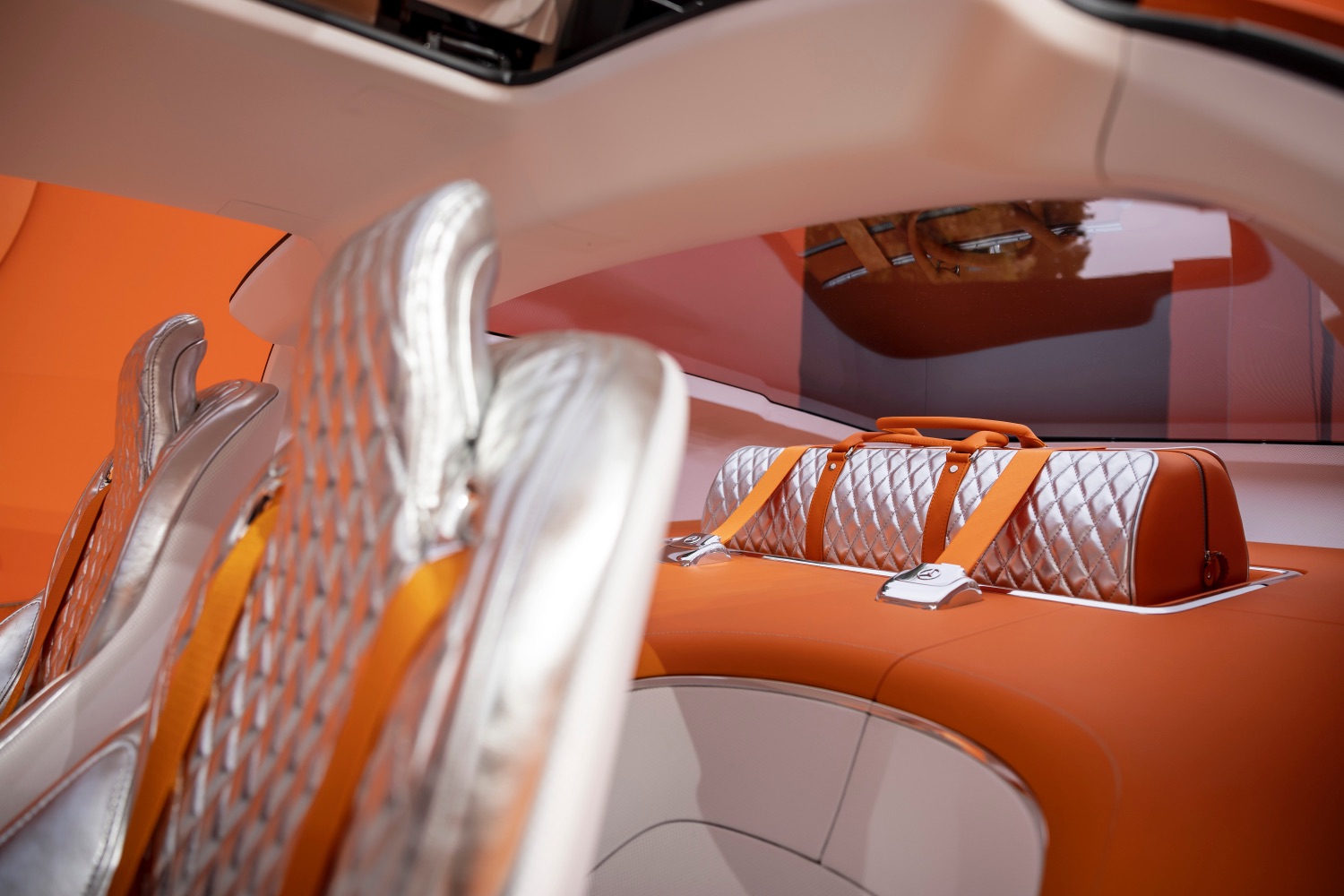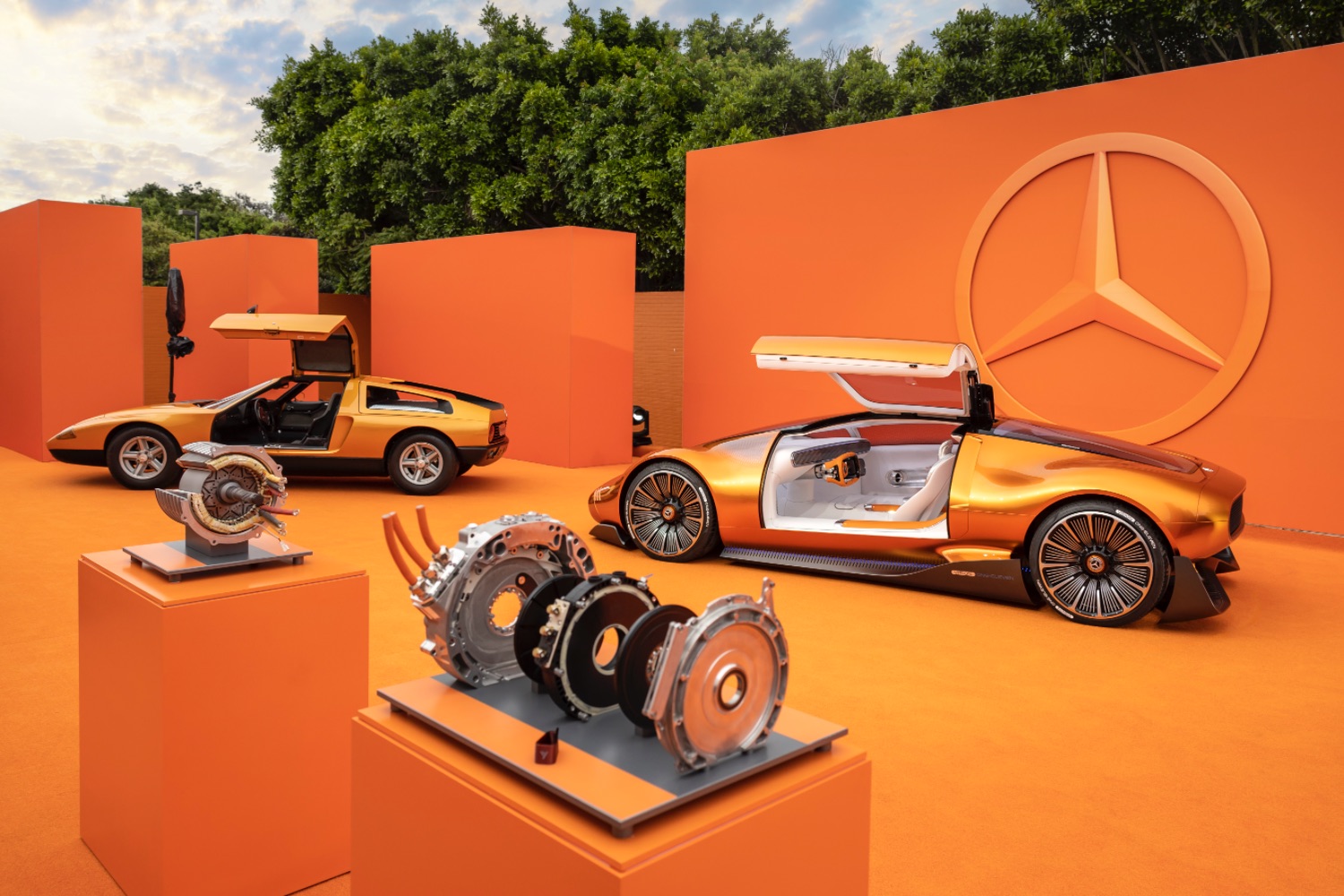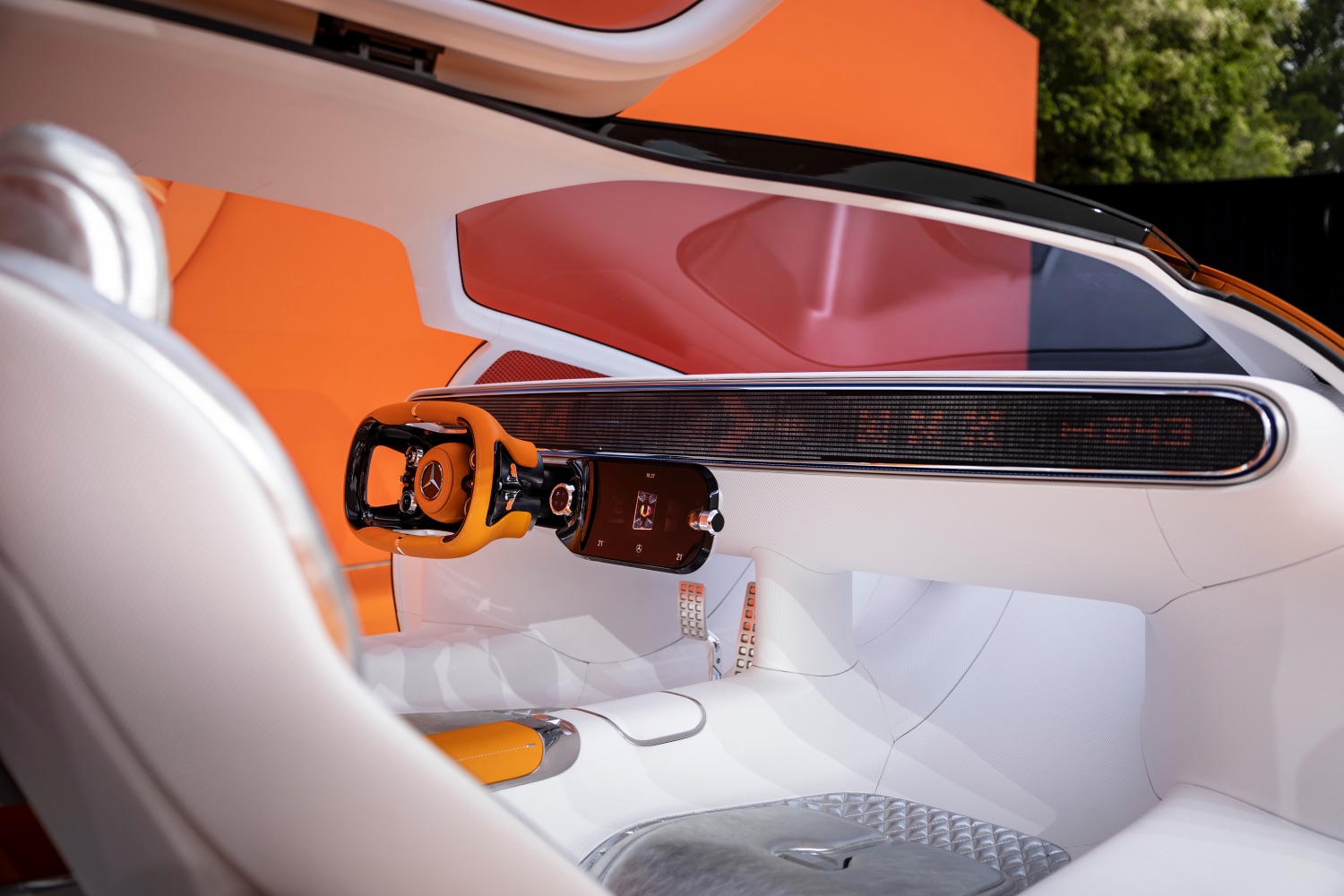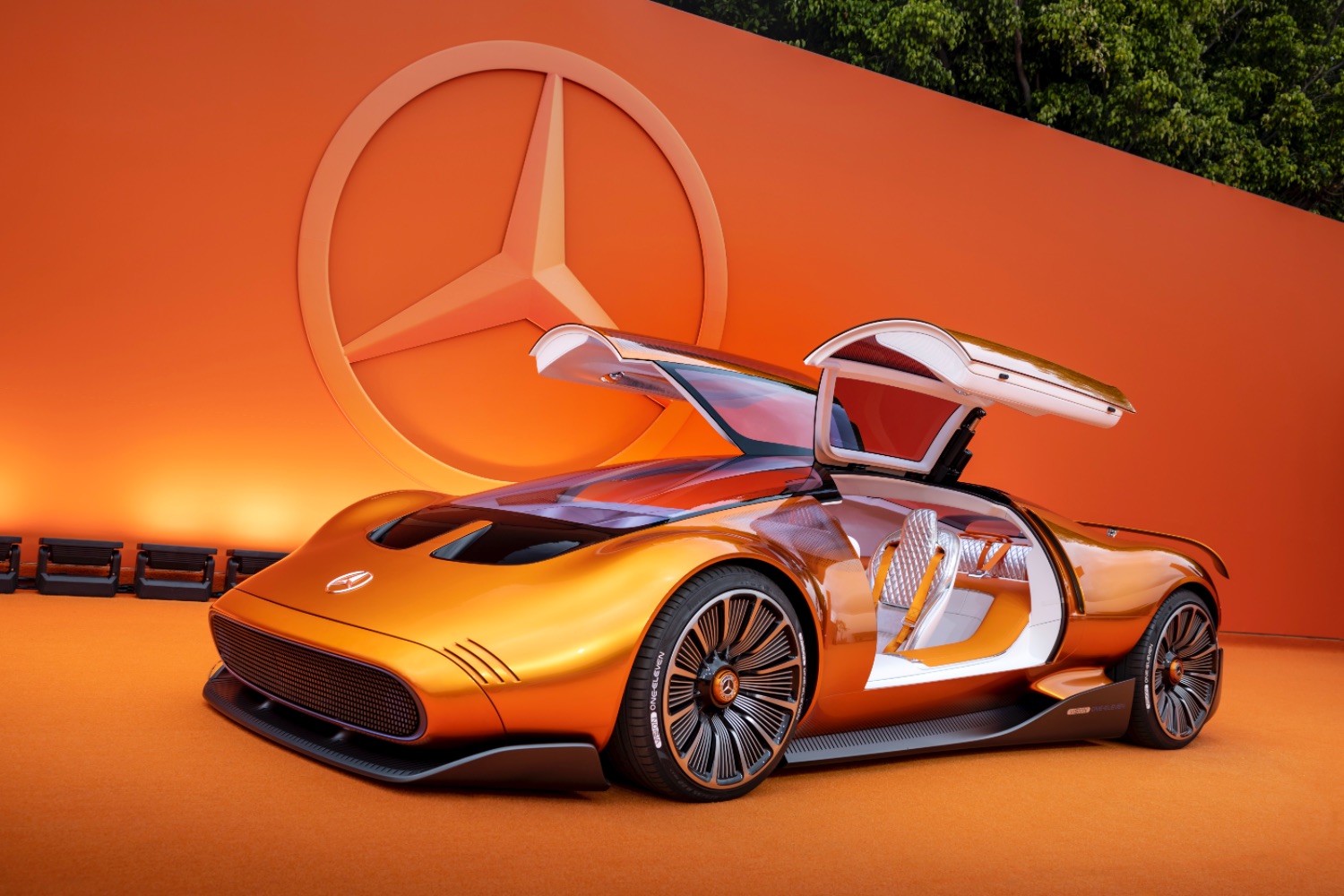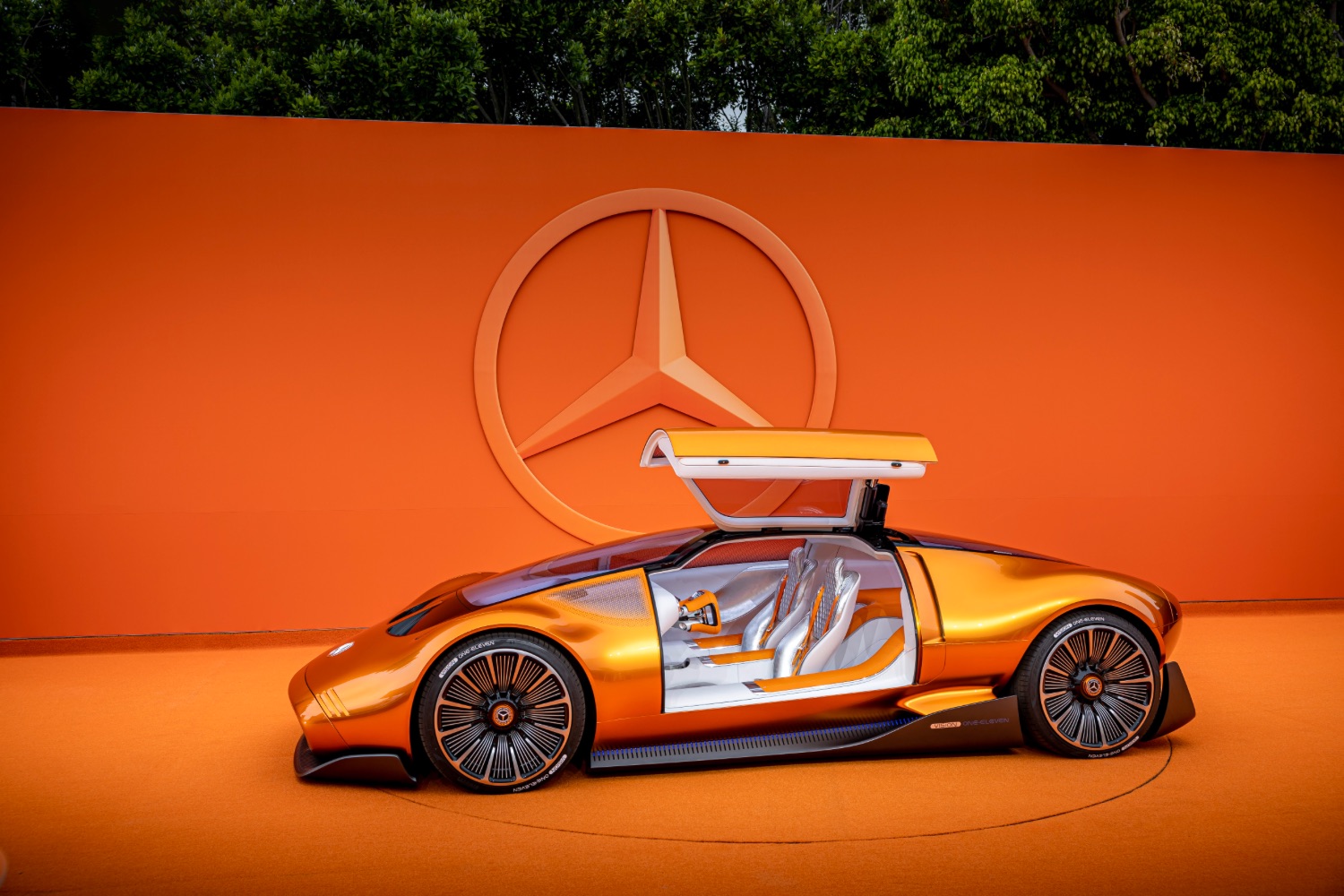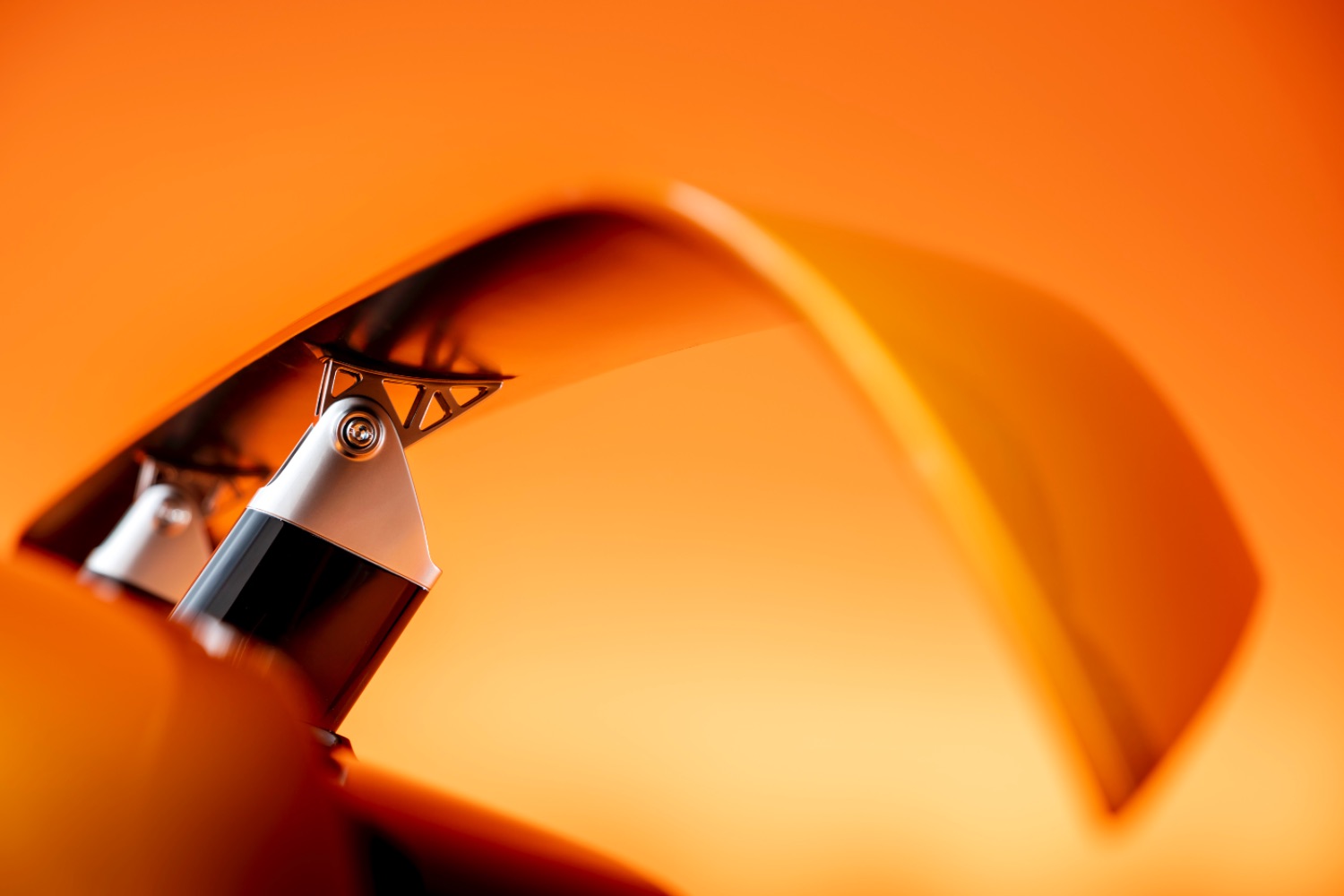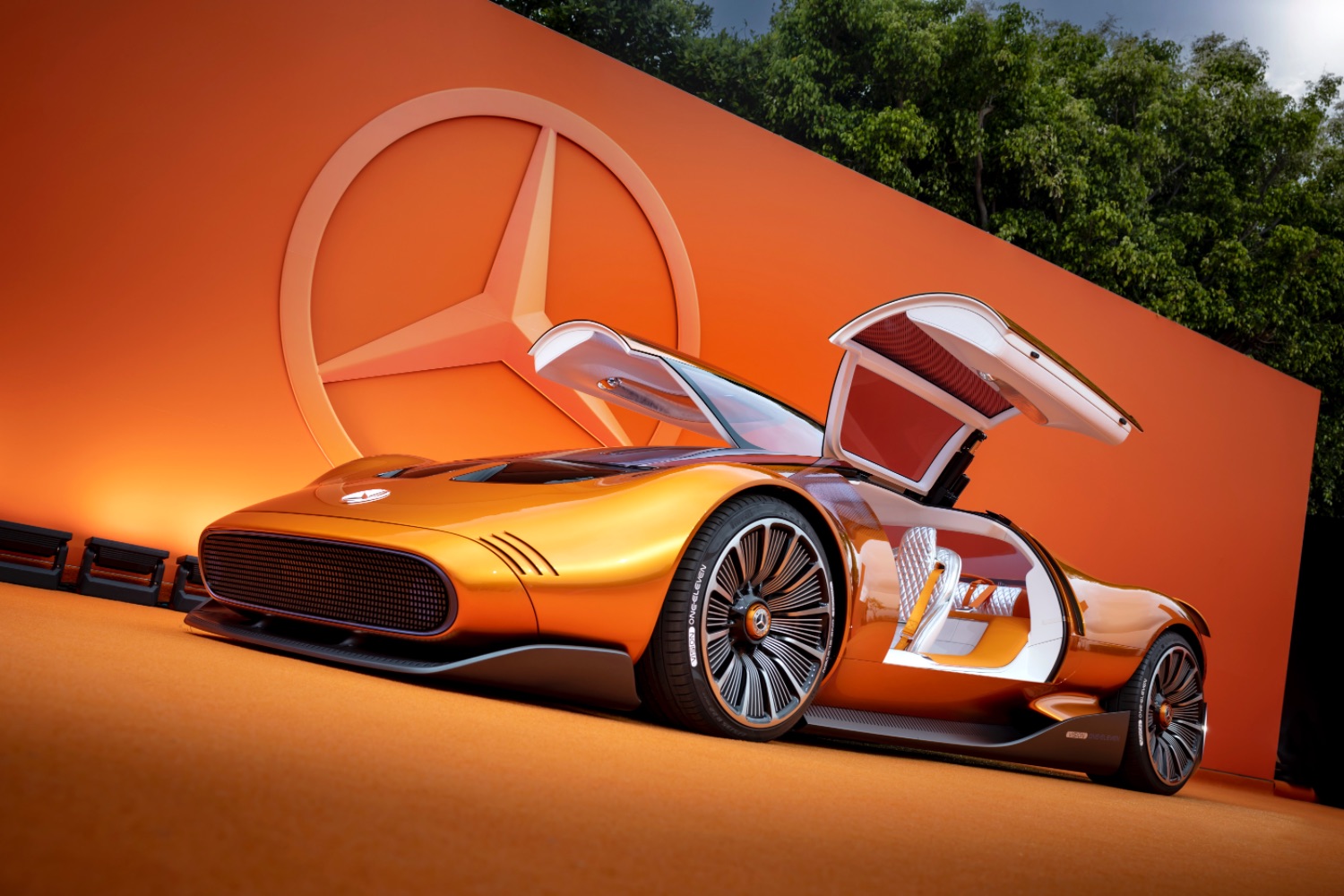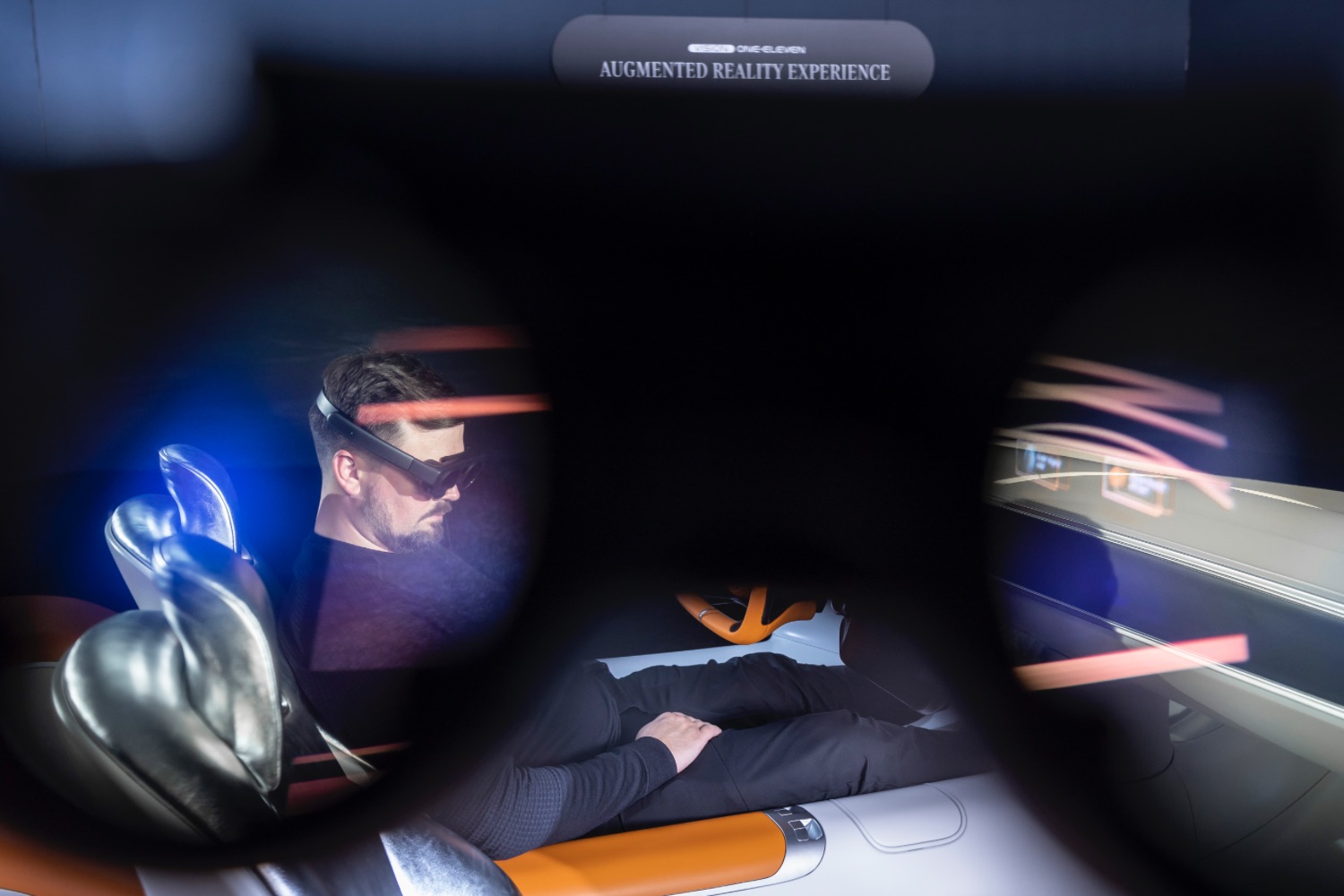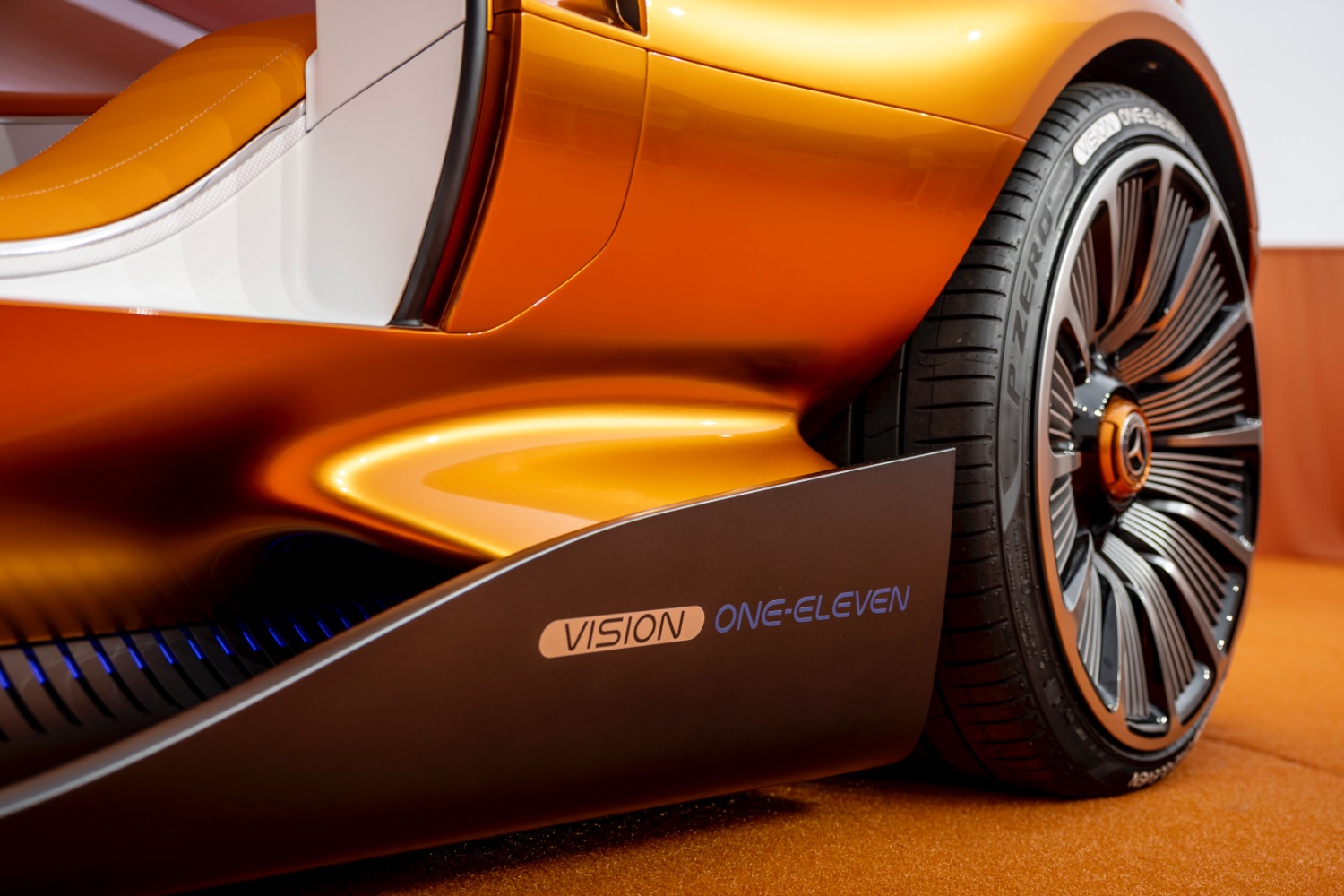Mercedes has created a new electric concept car by dipping deep into its back catalogue and drawing on the amazing C111 experimental supercar of the 1970s.
The original C111, of which Mercedes only ever made a handful, was a proposed replacement for the SL, complete with gullwing doors and a none-more-seventies angular body. Sadly, the C111 never made production - although it came incredibly close - and was instead used for experimental work with diesel and rotary engines.
Electric power
This, the Vision One-Eleven, uses many of the design cues of that original C111 but combines them with the look of the modern EQ range and - of course - adds electric power in place of the original's five-cylinder diesel or four-rotor rotary engines.
Sitting just 1,170mm high, the Vision One-Eleven takes the overall silhouette of the original car and adds curves, including an interpretation of the 'one-bow' continuous line that links the front and rear lights via the roof of the EQE and EQS models.
The Vision One-Eleven gets gullwing doors, of course, but these are flush-fit and come with pixellated side windows, which are opaque from the outside, giving the occupants a little more privacy.
There are other striking details, including the big wheels, sitting almost flush with the wheelarches, which feature a design meant to mimic the copper windings in an electric motor, while the aero panels under the nose and the tail are finished in a very seventies matte-black. Down the sides of the car, there are matching matte-black aero 'blades', backlit in blue, and the inner faces of the rear wheels are lit up too.
At the nose, where the original C111 had a simple black grille, the Vision One-Eleven gets a pixel screen, which mimics a grille most of the time, but which either displays the 'headlights' or shows messages for pedestrians or onlookers (our favoured message: 'We really, really should have put the original of this into production...').
The overall effect is very reminiscent of the original cars, especially with the copper-orange alubeam paint, which is brighter and more vibrant than the C111's slightly flat orange but similar enough to draw a direct line between the two. While the original car was all angles and flat panels, the Vision One-Eleven is curvier and has smoother lines, which in some ways might be a disappointment - a watering-down of the original styling? - but which, in other ways, is fantastic - is anyone else getting McLaren M8 Can-Am car vibes from the front?
"Our goal at Mercedes-Benz is not to do styling - our goal is to create icons. To me, that makes the difference between mainstream design and luxury. Design icons like the Type 300 SL and C 111 - both with gullwing doors - are part of our DNA. These legendary vehicles were major inspirations for the iconic design of the Mercedes-Benz Vision Vision One-Eleven. This is beauty and the extraordinary united in one vision of the future. Our all-electric vision show car is the modern-day interpretation of the C 111, which was avant-garde at the time. The element of surprise comes from its exceptionally clean, purist and, at the same time, extremely muscular proportions. This iconic clarity is also reflected in the interior. The equally sensual but minimalist design language stands for 'Iconic Luxury' by Mercedes-Benz", said Gorden Wagener, Mercedes' design chief.
Inside, Mercedes says that the Vision One-Eleven concept fuses the ideas of both an involving sports car and an autonomous vehicle, as well as offering Formula-One-style driver-focused minimalism with a more comfortable 'lounge' aesthetic.
From F1 to 'Lounge' inside
How does it do that? Simple - it changes the angle of the driver's seat backrest. That sounds daft, but here's the idea. Select 'Race Mode' from the small driver-focused touchscreen, and the seatback moves to a more upright position, which is theoretically better for controlling the car. Conversely, select 'Lounge Mode' and the seatback reclines to the point where there seems to be no division between the seat, doors, and sills - the interior becomes almost one continuous surface. "This creates a whole new, exceptionally airy spatial concept. In contrast to previous mid-engine sports cars, it takes advantage of the compact proportions of electric motors to extend the interior rearwards. Consequently, the lounge-like interior invites occupants to take their time and relax - a completely new approach for the sports car of the future," says Mercedes.
Sadly, the tartan cloth seats of the original haven't made a return, but you do get orange-and-silver contrasting upholstery, with diamond quilting, instead. Many of the interior surfaces are made from 100 per cent recycled polyester, while the seats' leather is tanned using coffee bean husks. To complete the seventies aesthetic, the brake and accelerator pedals are made from aluminium and are hinged on the floor in the manner of a classic Porsche 911. Meanwhile, the seats aren't really seats - there's no separate frame, except for the backrest, and the rest of the 'seat' is made up of cushions and panels bolted straight to the car's structure.
The steering wheel is a compact oblong shape, fitted with controls and touch-sensitive pads, and next to that is the compact driver's display screen. That's a modern high-def screen, but across the centre of the cabin is a bigger screen that uses high-tech modern pixel display technology to mimic the look of the seventies LCD screen.
Screens not enough for you? That's OK, Mercedes has gone a step further... The Vision One-Eleven comes with a 'Magic Leap 2 augmented reality headset', which you wear while driving and essentially gives you both a heads-up display and an all-around touchscreen wherever you look. "In effect, the entire car becomes the user interface," says Mercedes. The system can project sat-nav directions and images directly onto the real environment beyond the car, as well as use Car-To-X communication to know where road hazards are and give the driver an 'x-ray' view of what's ahead, even dangers lurking behind buildings and other traffic.
Axial-flow electric motors
While Mercedes isn't talking about specific power, performance, nor range figures for the all-electric Vision One-Eleven, it is talking up the car's new electric motors. These are 'axial-flow' units provided by British electric motor maker YASA, which was bought out by Mercedes in 2021. Axial flow motors are, potentially, much more efficient than current radial-flux electric motor designs, as explained by Tim Woolmer, Founder and Chief Technology Officer of YASA: "Axial-flux motors are significantly lighter and more compact, yet more powerful than comparable radial-flux motors currently used in 99 percent of all electric cars. In an axial-flux motor, the electromagnetic flow runs parallel to the motor's rotational axis, which is highly efficient. In a radial-flux motor, the flow runs perpendicular to the rotational axis. Compared to radial-flux motors, they have considerably higher and more enduring power reserves, which delivers a whole new level of performance." The Vision One-Eleven gets two of these motors, giving it four-wheel drive (an innovation the original C111 missed out on). Another benefit of these axial-flow units is that they're significantly more compact than a traditional e-motor, taking up just one-third of the space.
While the Vision Vision One-Eleven might be just for show - we suspect that, sadly, once again, this is a hip-high orange dream car that Mercedes will keep as only a concept - those YASA motors are definitely headed towards production. Mercedes has confirmed that its Berlin-Marienfelde factory is gearing up to build them and that they will be: "At the heart of the forthcoming powertrain for the performance segment."
You may not be able to buy a Vision Vision One-Eleven to drive, but you can buy into the lifestyle espoused by the car. Mercedes has confirmed that instead of building the car, it will make a range of accessories inspired by it, including a weekend bag, sunglasses (with Zeiss lenses), a hoodie, a baseball cap, and an iPhone cover.


